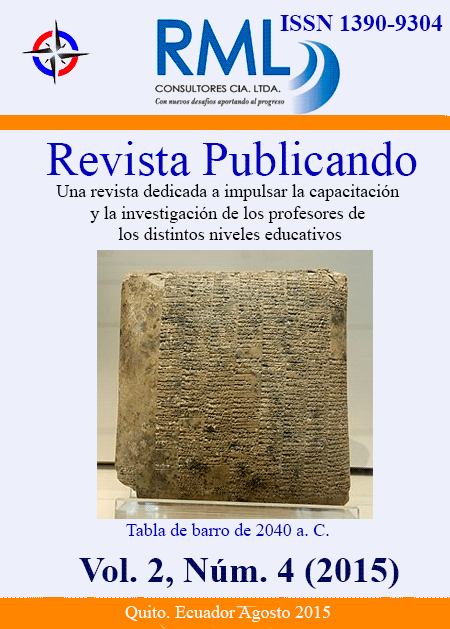Abstract
The research aimed to classify the different Latin American countries from the so-called Agricultural GDP. For 20 countries: Argentina, Bolivia, Brasil, Chile, Colombia, Costa Rica, Cuba, Dominican Republic, Ecuador, Guatemala, Honduras, Haití, Jamaica, México, Nicaragua, Panama, Peru, El Salvador, Uruguay and Venezuela. The Agricultural GDP was obtained, according to the ISIC divisions 1-5, which includes forestry, hunting, fishing, crop cultivation and animal husbandry. The statistical treatment of the data allowed to cluster the countries in five groups. Most countries, 8 are grouped in a cluster that holds the indicator in a range of 4.72 to 8.56 and a standard deviation of 1.43. This group corresponds to countries that although compared to 1990 reduced the agricultural GDP from 2010, remain relatively stable this indicator. The group obtained suggests future research that could determine the possible relationship between this indicator and, for example, the percentage of jobs in agriculture.
Rural development, agricultural taxation and Agricultural GDP terms were collected in a database that is available to other researchers interested in these issues and grouped together a significant body of references that are important for the study of this issue.
References
Banco, M. (2015). Agricultura, valor agregado (% del PIB) Datos. from http://datos.bancomundial.org/indicador/NV.AGR.TOTL.ZS/countries?display=default
Bandeira Greño, P., Atance Muñiz, I., & SUMPSI VIÑAS, J. (2011). Las políticas de desarrollo rural en América Latina: requerimientos de un nuevo enfoque. Cuadernos de Desarrollo Rural(51).
Carrión, D., & Herrera, S. (2012). Ecuador rural del siglo XXI.
Foster, W., Rivera, R., Valdés, A., & Pérez, R. (2010). Evolución y distribución del ingreso agrícola en América Latina: evidencia a partir de cuentas nacionales y encuestas de hogares.
HERRERA-TAPIA, F., Lutz-Bachere, B., & Vizcarra-Bordi, I. (2014). La política de desarrollo rural en México y el cambio institucional 2000-2006. Revista Economía, Sociedad y Territorio, 9(29).
IBM, C. (2013). IBM SPSS Statistics for Windows (Version 22.0 ): IBM Corp.
Jain, A. K. (2010). Data clustering: 50 years beyond K-means. Pattern recognition letters, 31(8), 651-666.
Kay, C. (2008). Reflections on Latin American rural studies in the neoliberal globalization period: a new rurality? Development and Change, 39(6), 915-943.
Kay, C. (2009). Estudios rurales en América Latina en el periodo de globalización neoliberal: ¿ una nueva ruralidad? Revista mexicana de sociología, 71(4), 607-645.
Manzanal, M. (2014). Instituciones y gestión del desarrollo rural en Argentina. Revista Economía, Sociedad y Territorio, 3(12).
Pérez Correa, E. (2012). Una visión del Desarrollo rural en Colombia. Cuadernos de Desarrollo Rural(41).
Pérez, E., MAYA, D. L., & FARAH, M. A. (2012). Metodologías participativas en la formulación y planificación de proyectos de desarrollo rural. Fase de diagnóstico en siete municipios del sur del Huila. Cuadernos de Desarrollo Rural(47).
Prévost, P. (2012). El desarrollo local y las cooperativas. Cuadernos de Desarrollo Rural(37).
Ramírez Vigoya, A., & Yanes Guerra, C. (2014). Incidencia del PIB agrícola en el nivel de empleo agrario. Un análisis comparativo para países seleccionados de Latinoamérica.
Silvestre, A. S., & Soler, L. O. (2014). El desarrollo del turismo rural y sus repercusiones. Papers de turisme(17), 89-101.

This work is licensed under a Creative Commons Attribution-NonCommercial-ShareAlike 4.0 International License.
Copyright (c) 2019 Lucia Eudosia Castro Rugel
